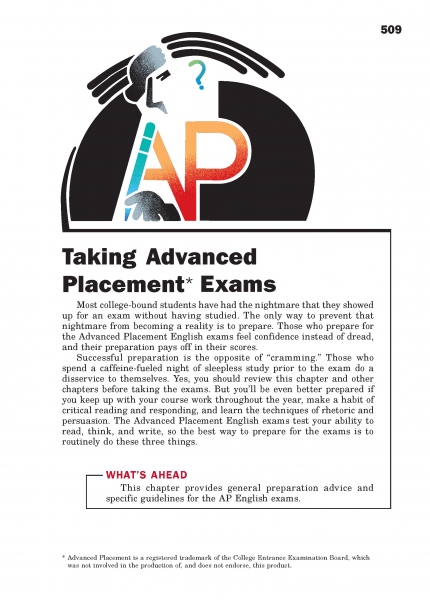Page 509 from

Start-Up Activity
Ask students to take out a piece of paper and write a paragraph about someone they know or have read about who has achieved some level of success. Ask for volunteers to read their paragraphs aloud for discussion. Focus the discussion on important lessons that can be learned from each story, inspiring students as they prepare for the AP examinations.
Think About It
“Great literature is simply language charged with meaning to the utmost possible degree.”
—George Orwell

Start-Up Activity
Ask students to take out a piece of paper and write a paragraph about someone they know or have read about who has achieved some level of success. Ask for volunteers to read their paragraphs aloud for discussion. Focus the discussion on important lessons that can be learned from each story, inspiring students as they prepare for the AP examinations.
Think About It
“Great literature is simply language charged with meaning to the utmost possible degree.”
—George Orwell
